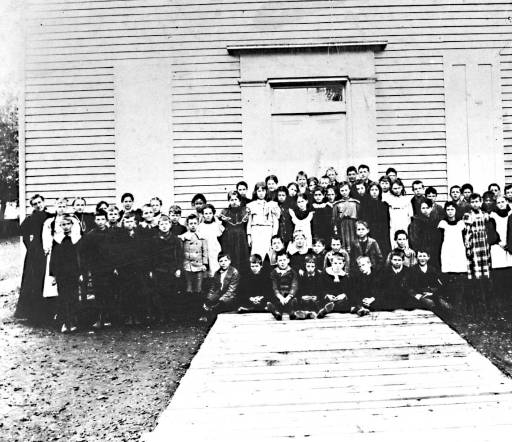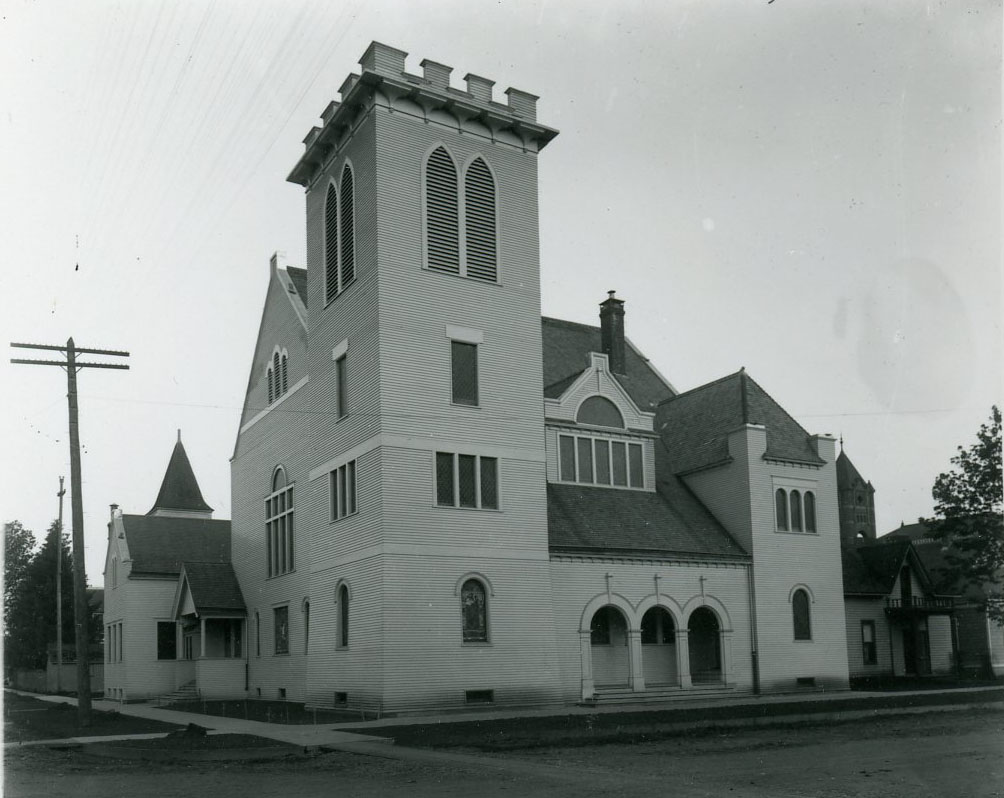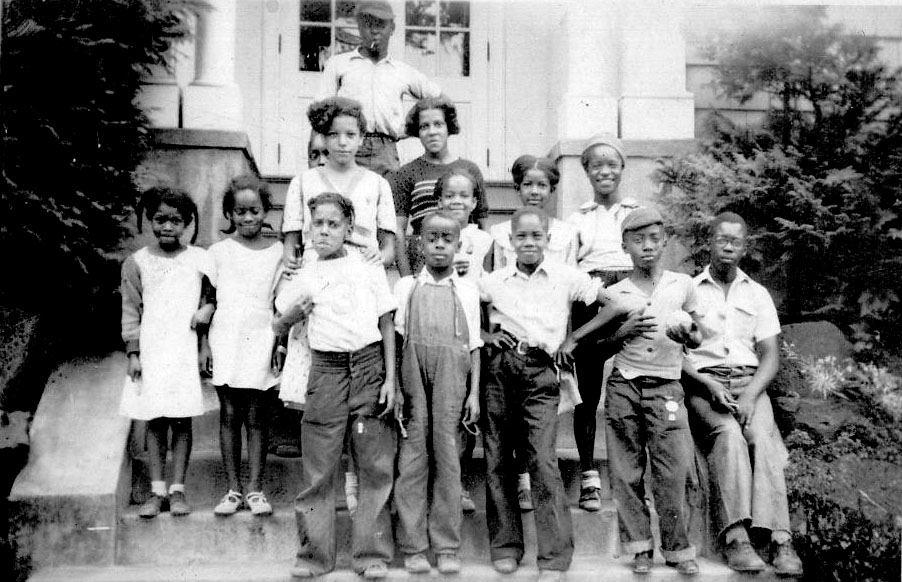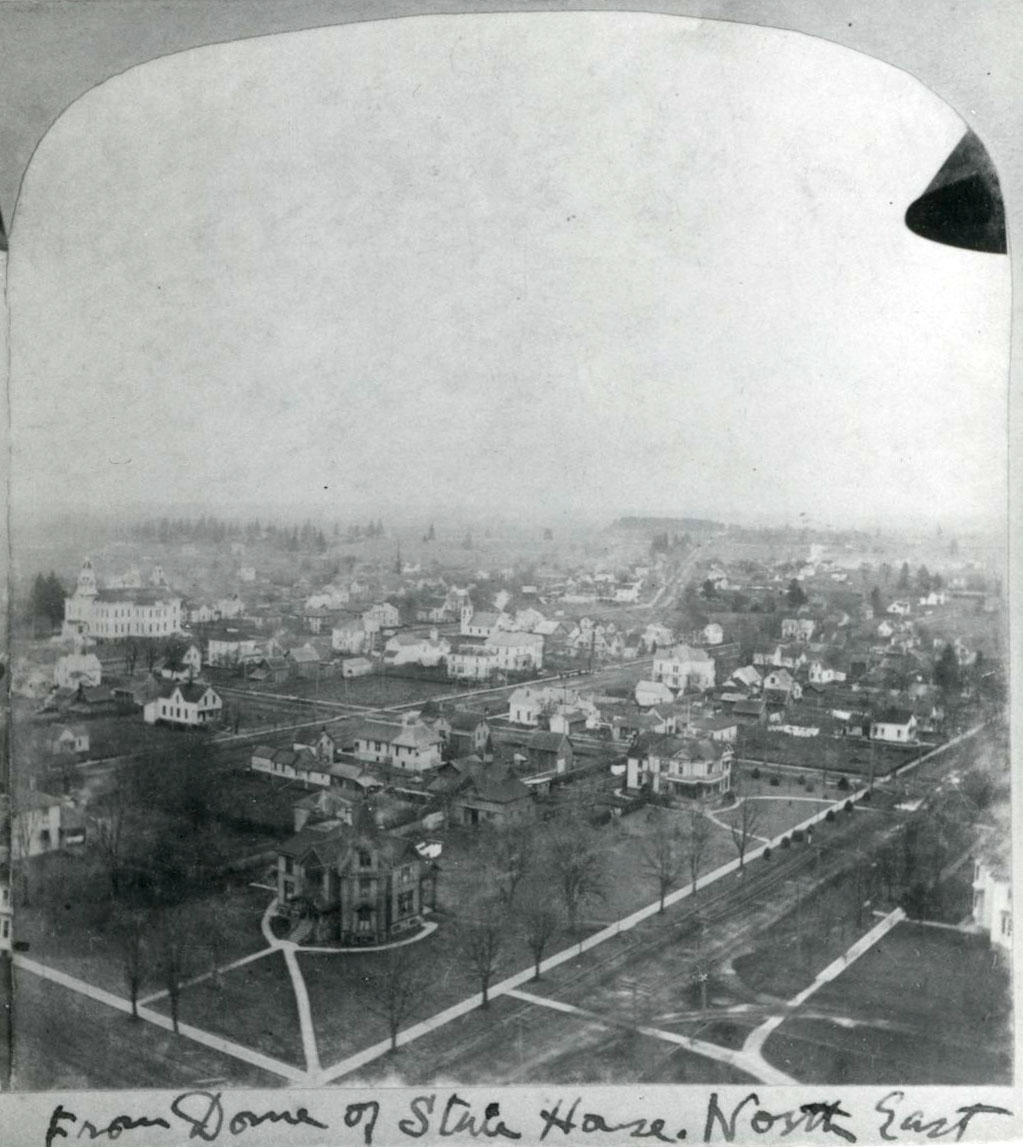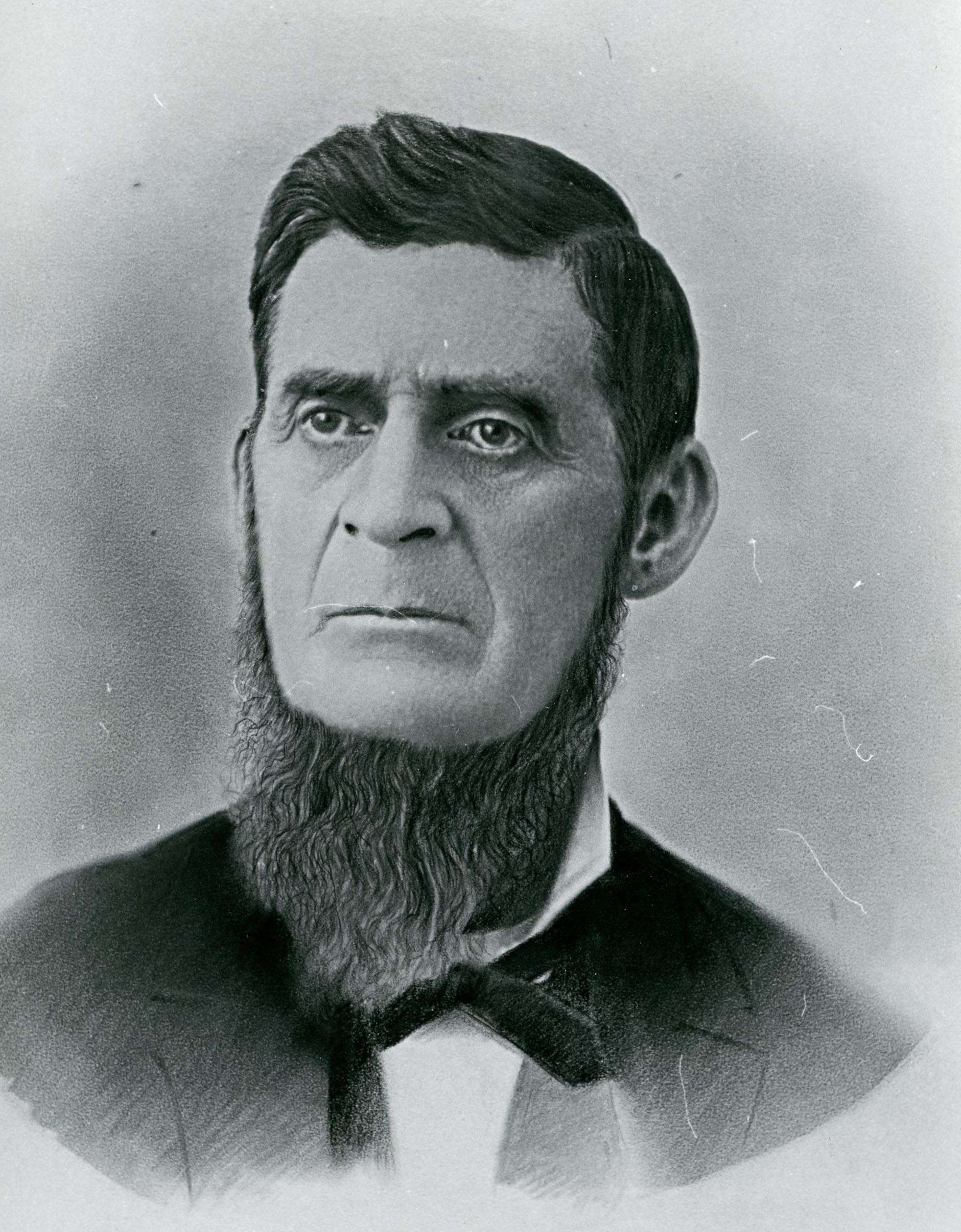The first school open to African American students in Oregon—referred to as the Colored School—was founded in March 1867 by African American residents in Salem. In 1868, the original school closed when the city opened a segregated public school called Little Central, which was also called the “Colored School.” Oregon did not have a state superintendent of schools to institute and manage free and uniform schools in every district until 1872, so people often organized their own schools and determined enrollment requirements and school fees. In a state where African Americans were legally, economically, and socially marginalized by the white population, the children of Black families were routinely barred from school attendance.
School-age children in Salem in the 1850s had only one public school to attend: the Old Log Schoolhouse on the corner of Marion and Commercial Streets. The school required tuition of from four to five dollars per child each term (from late September to March) to pay for maintenance. Black students were not allowed to attend.
By 1866, Salem had three public schools serving approximately 200 students. It is unclear if the city counted Black children in their assessment of the over 600 “eligible” school-aged children, but it is likely it did not. Even though the 1862 Oregon Code of Laws required that schools be free to all students “between the ages of four and twenty years,” the children of African American residents—seventeen in the 1860 census and fifty by 1870—continued to be excluded from attending the city’s public schools. Their parents, however, were required to pay the five-mill (5/10 of a penny) school assessment tax imposed by the school district.
African American artist William P. Johnson had offered in 1861 a scholarship of $500 to one of the schools to allow his daughter-in-law to enroll, but his offer had been rejected. By March 1867, he had collected enough funds from friends and other Black families in Salem to open a school with about eight students and possibly some young adults. With $430.75 in hand, he rented a room for $10 a month and engaged a teacher to conduct classes. The schoolroom may have been located at the Congregational Church, whose minister, Obed Dickinson, encouraged African Americans to join his congregation, and the teacher may have been Dickinson’s wife Charlotte, who had been teaching Black women in her “kitchen school.” An adult Colored School was opened in January 1868, and those students may have begun their education in the earlier school.
The Colored School had completed one six-month term when in 1868 the Salem School District opened Little Central School, a $1,500, one-story, two-room structure at the southeast corner of High and Marion Streets. The school was designated for the education of African American students and was adjacent to the larger Central School, where white students attended. The first recorded teachers at Little Central were Lucy Mallory and Marie E. Smith. The Colored School remained at this location until the end of the 1871 school year, when the school was discontinued.
By 1872, Salem voters had passed a three-mill tax to support the city’s schools, and the fifteen students who had been enrolled at Little Central were integrated into the city schools. In 1904, Salem’s first four-year high school was built on the site of Central School. The old building was moved to the corner of Center and Commercial Streets, but there is no record of what became of Little Central, home of Salem’s first public Colored School; it was likely demolished.
-
![]()
Central School, 1890.
Courtesy Salem Public Library Hist. Photograph Collections, Ben Maxwell Coll, #1346
-
![]()
Central School, 1863.
Courtesy Salem Public Library Hist. Photograph Collections, Special Collections, pcds032
-
![]()
First Congregational Church, Liberty and Center Streets, Salem.
Courtesy Oregon Hist. Soc. Research Lib., 0218G026
-
![]()
View of Marion Street, East Salem, 1885.
Courtesy Oregon Hist. Soc. Research Lib., 0170G051
Related Entries
-
![Black People in Oregon]()
Black People in Oregon
Periodically, newspaper or magazine articles appear proclaiming amazeme…
-
![City of Salem]()
City of Salem
Salem, the capital of Oregon, is located at a crossroads of trade and t…
-
![Obed Dickinson (1818–1892)]()
Obed Dickinson (1818–1892)
When Obed Dickinson arrived in Salem in 1853 to become pastor of the Co…
Related Historical Records
Map This on the Oregon History WayFinder
The Oregon History Wayfinder is an interactive map that identifies significant places, people, and events in Oregon history.
Further Reading
Green, Virginia. “Hidden Citizens: Blacks in Salem Through the years.” Historic Marion, 40:1 (Spring 2002): 1-5.
McLagan, Elizabeth. A Peculiar Paradise – A History of Blacks in Oregon, 1788-1940. Portland, Ore.: The Georgian Press, 1980.
Oliver, Egbert. “Obed Dickinson and the ‘Negro Question’ in Salem.” Oregon Historical Quarterly 92:1 (Fall 2002): 5-40.

